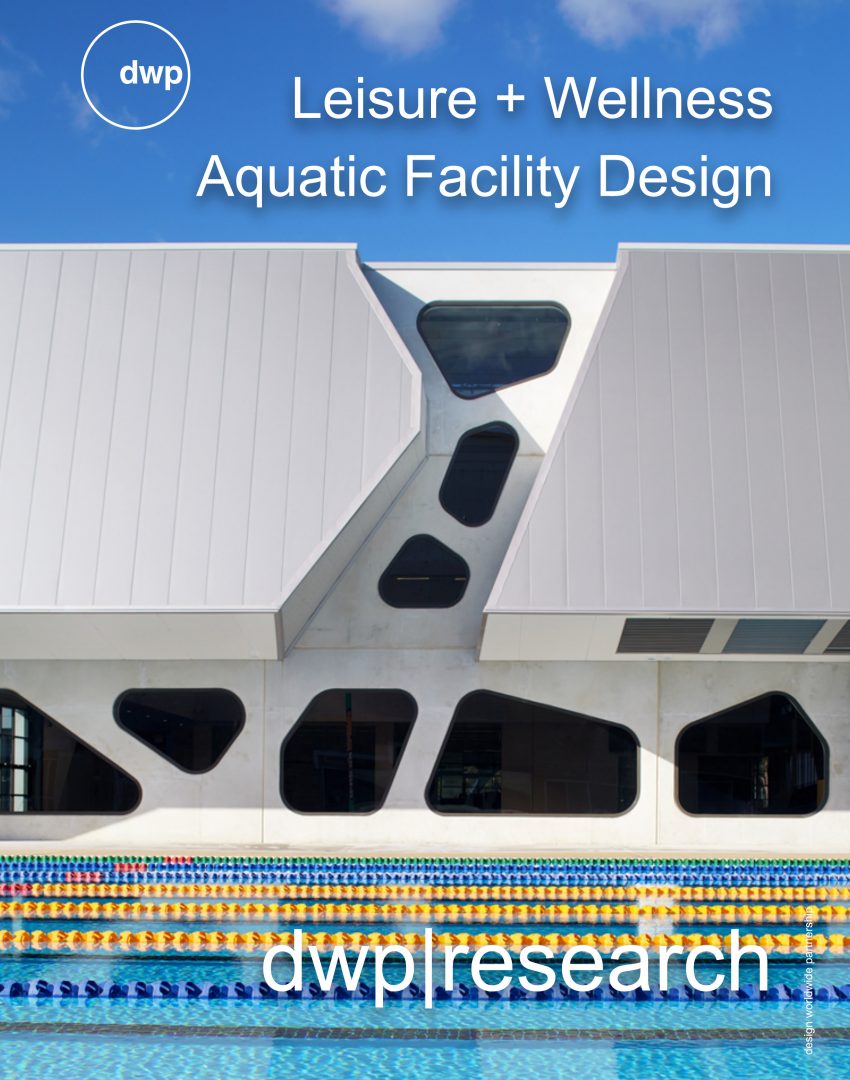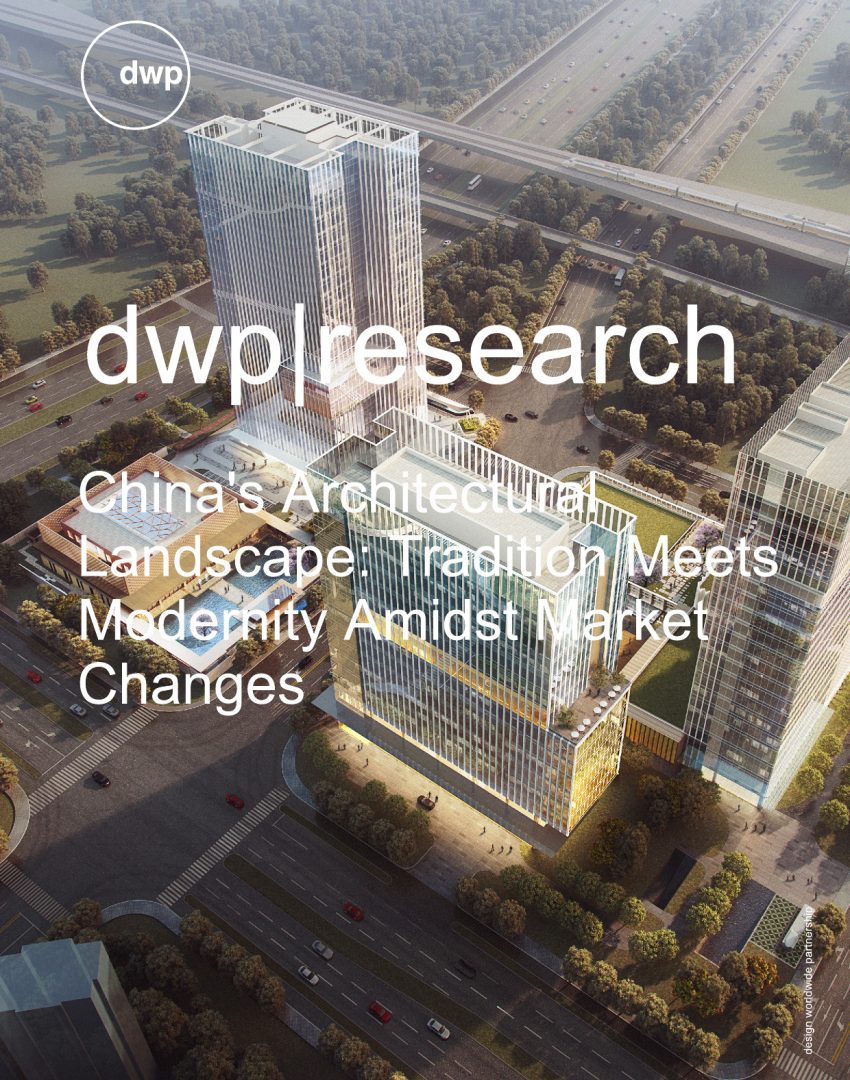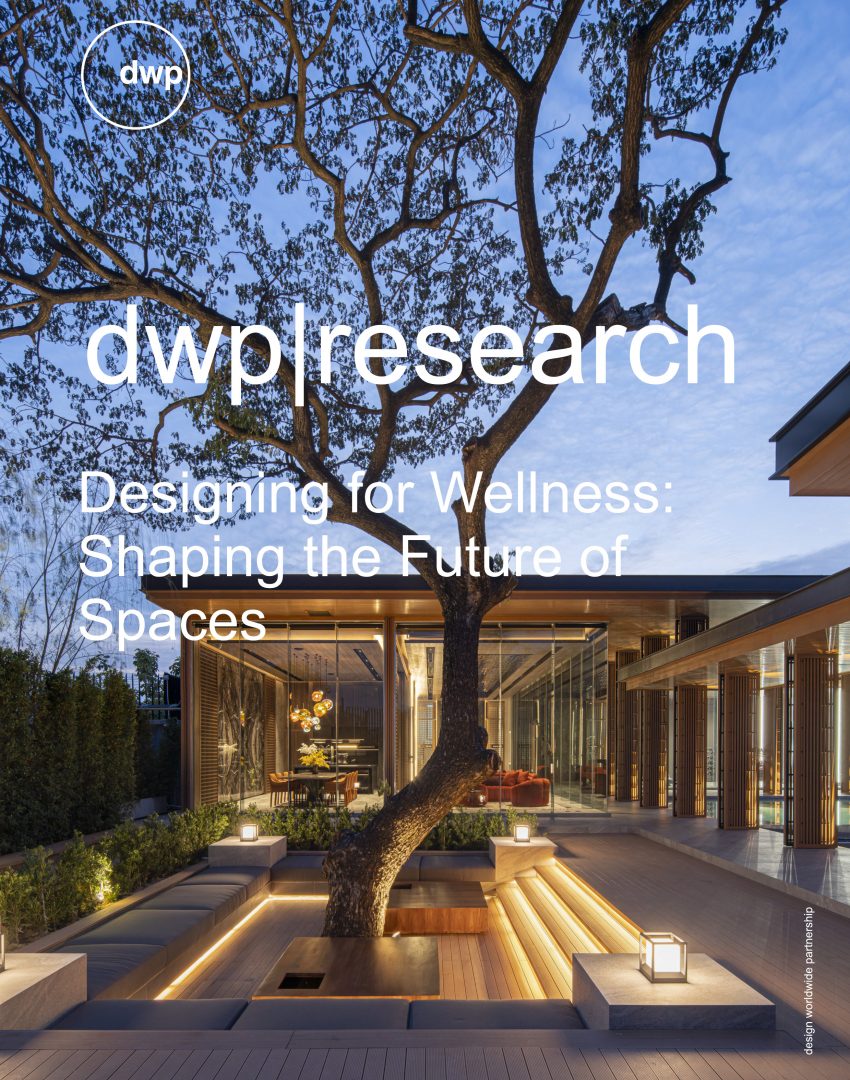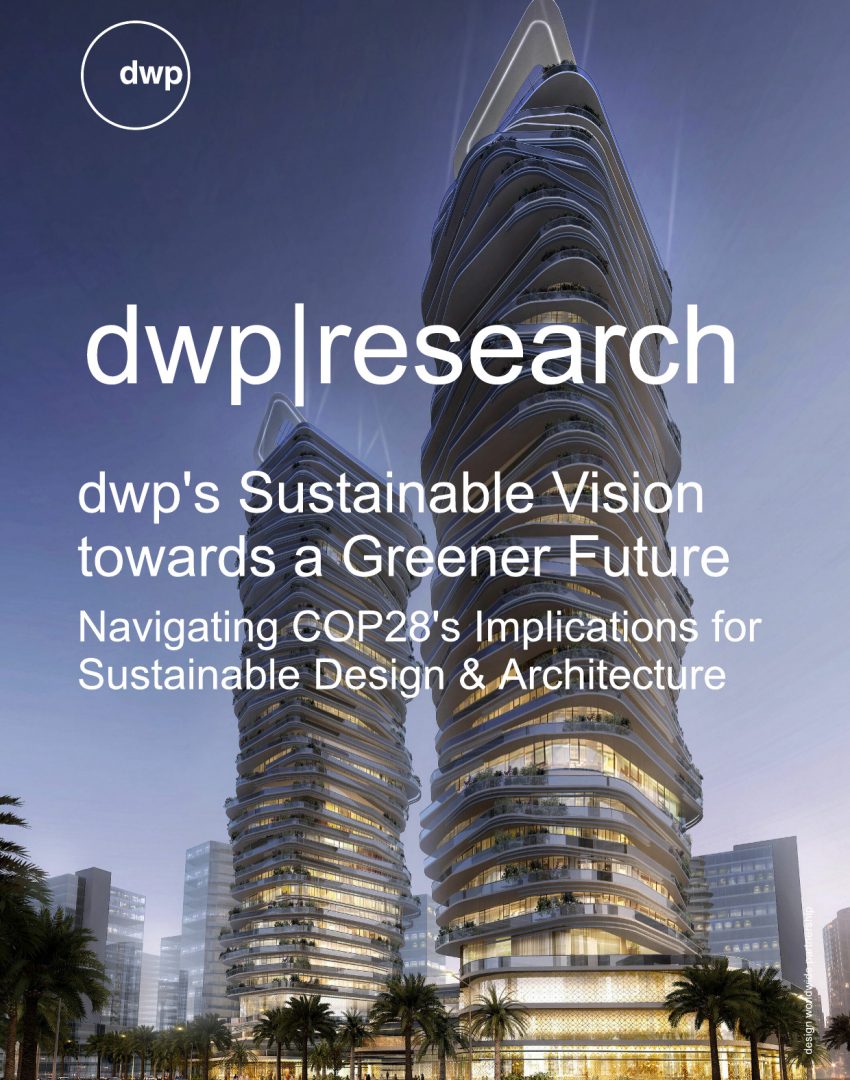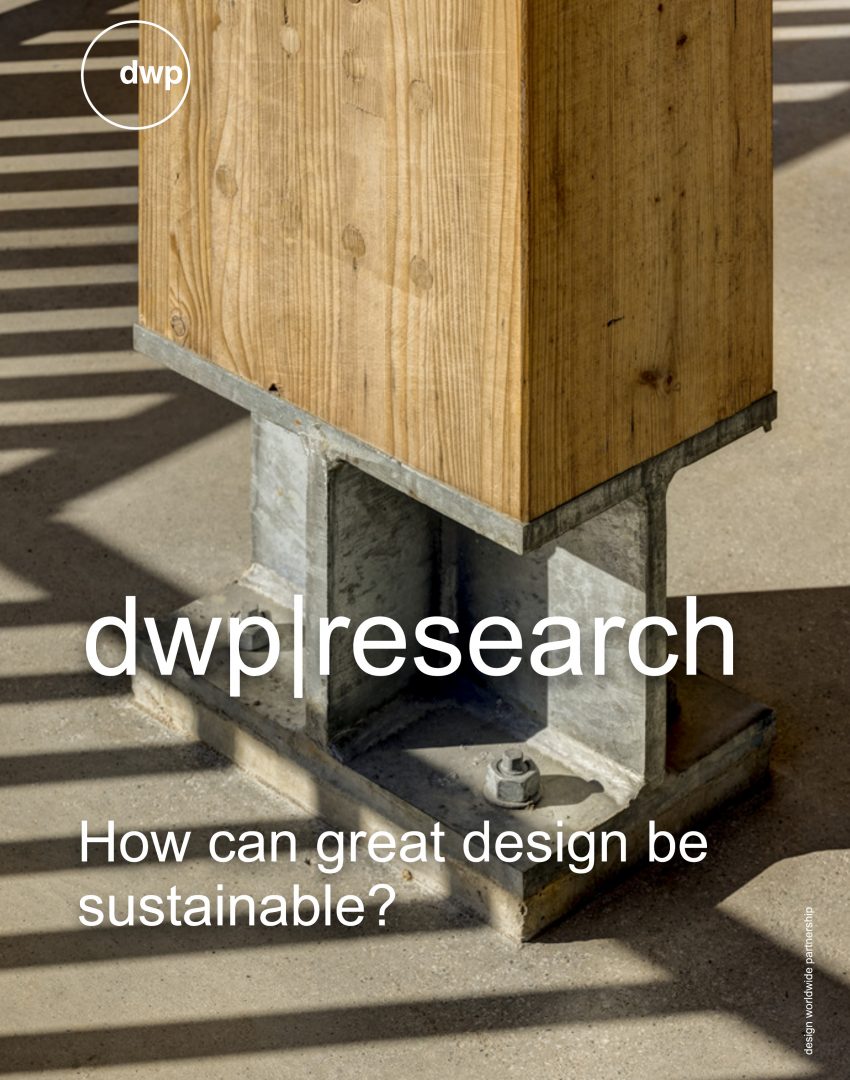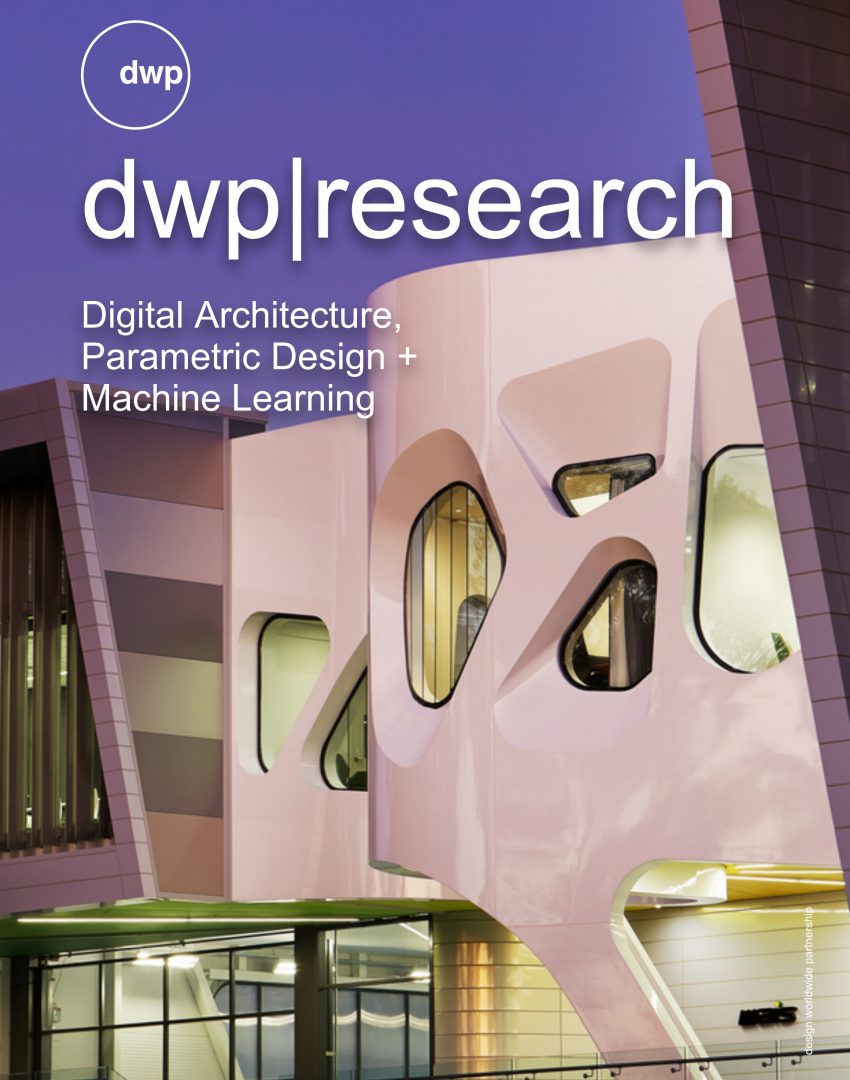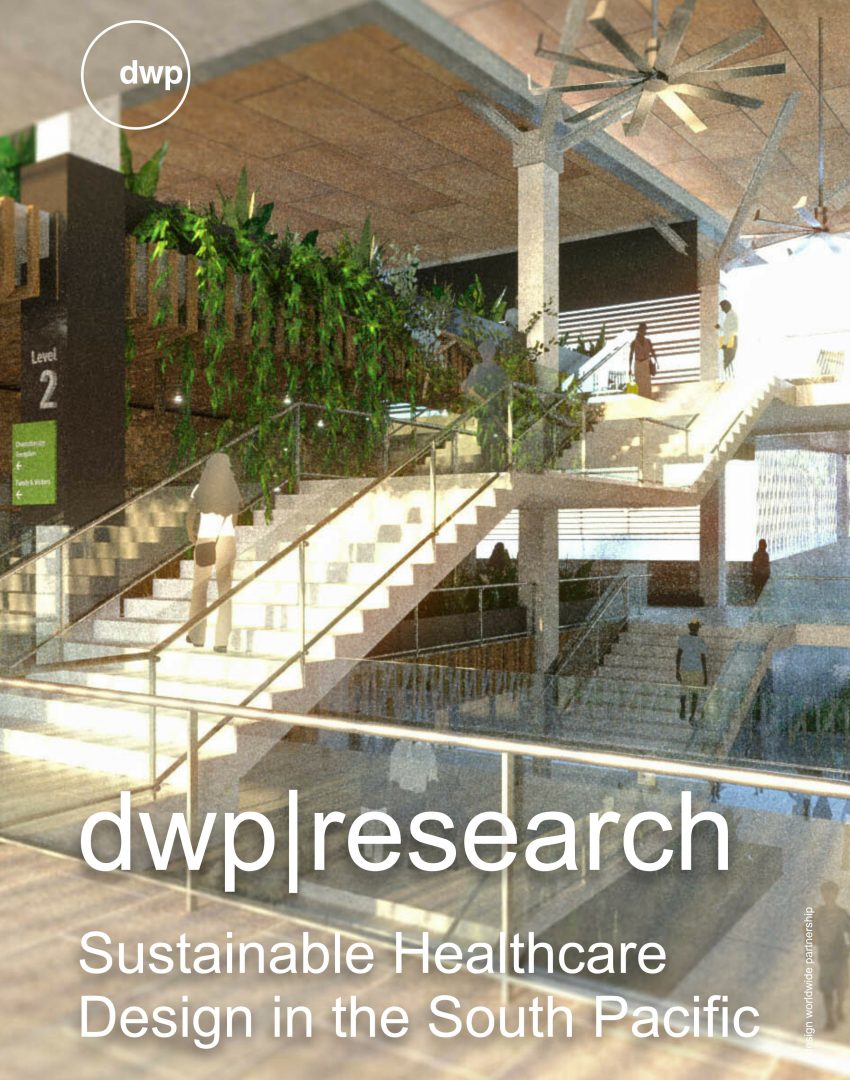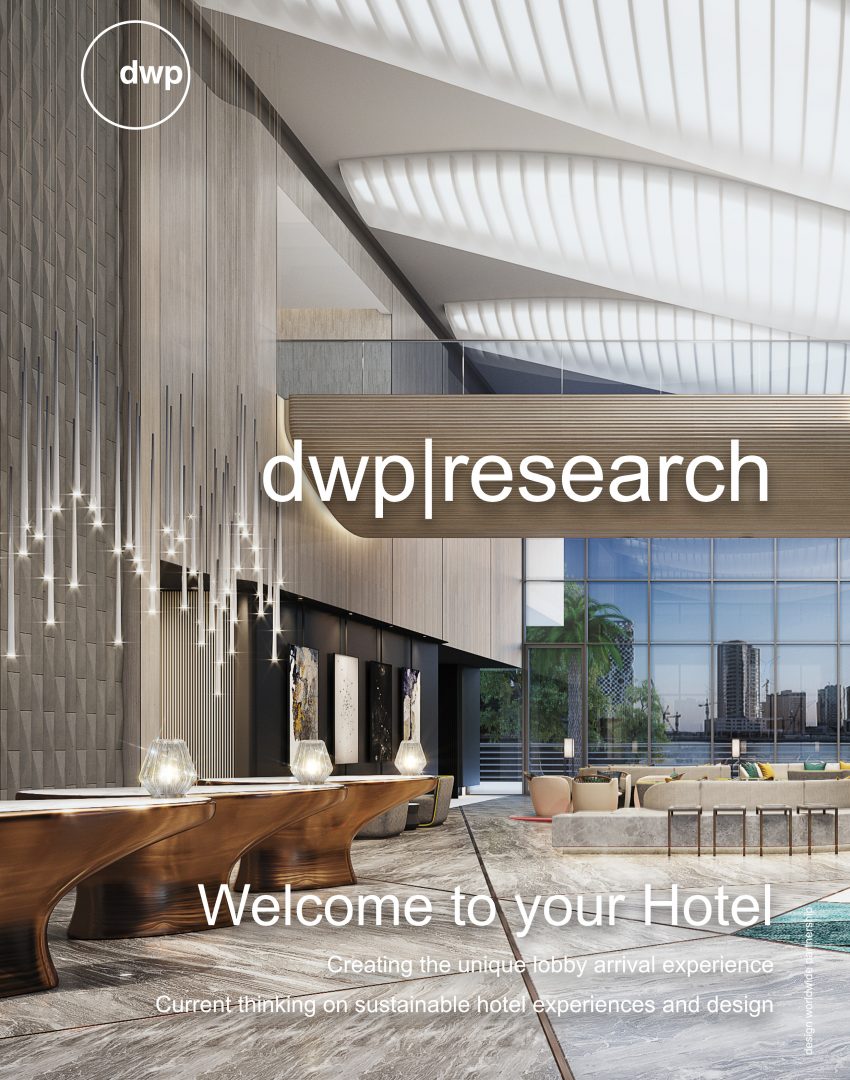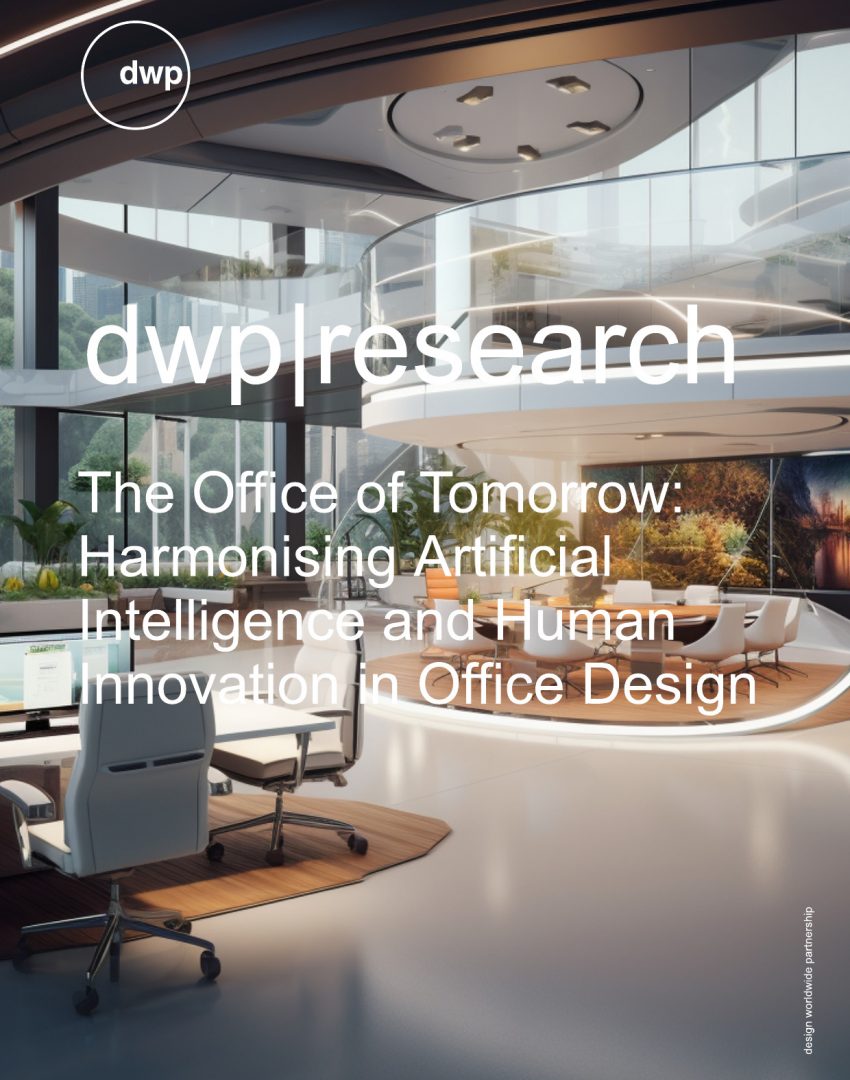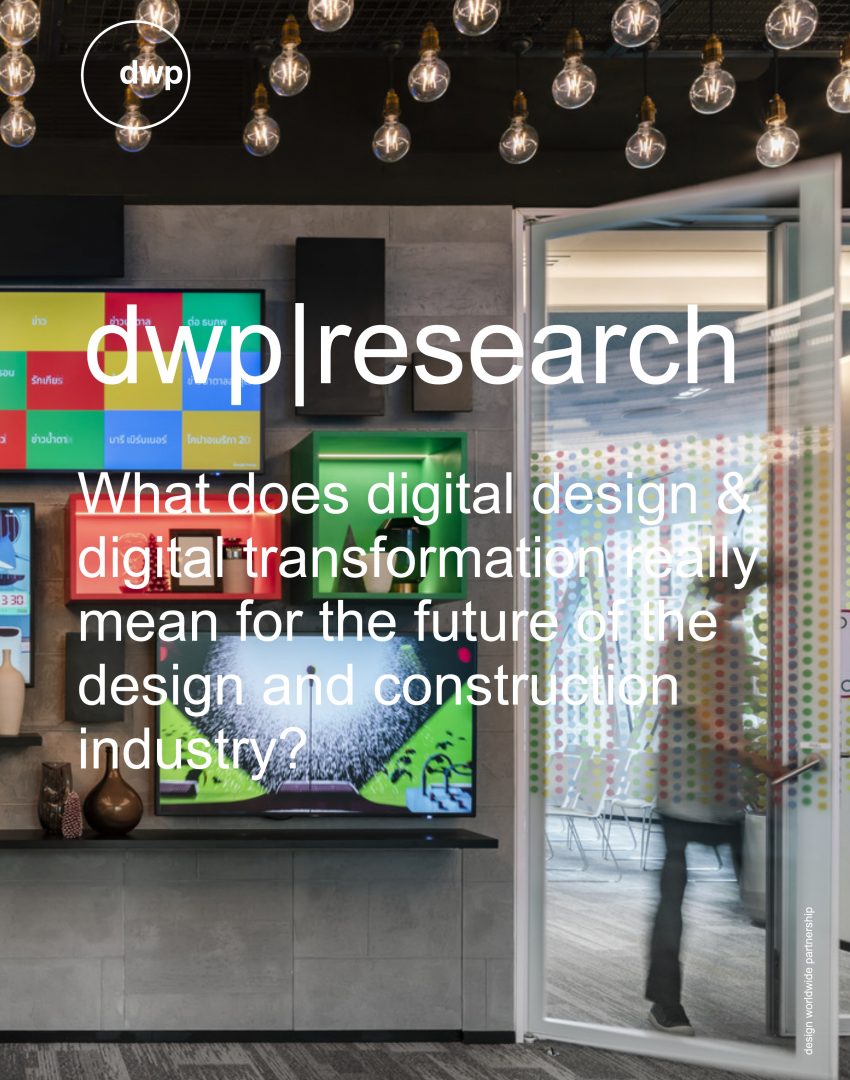How can we make better places for people and what does sustainable design mean for workplaces
dwp|research: Sustainable Workplace Design
 How can we make better places for people and what does sustainable design mean for workplaces?
How can we make better places for people and what does sustainable design mean for workplaces?
by Adriana Graur and Neil Carter dwp | design worldwide partnership
Sustainability is defined by the United Nations Brundtland Commission as “meeting the needs of the present generation without compromising the ability of future generations to meet their needs.” (UN Brundtland Commission 1987).
Sustainability is now a common topic of conversation in the workplace and is on the agenda of businesses and consumers alike. Most companies now consider the environmental impact of their products and services.
However, for people at dwp, sustainability goes beyond product or service attachment, and we look to help people realise their potential and improve their quality of life. Sustainability can improve work culture and work-life balance, which has a significant impact on our employees worldwide.
Sustainable workplaces are characterised by healthy habits – the roots that sustain a good community and increase employee productivity by creating a safe, happy and diverse environment.
Therefore, it’s essential to recognise that a sustainable workplace is only possible through a holistic approach to well-being and the natural environment. Moreover, a workplace is a place where people can build solidarity and broad alliances across common interests.
